Brushed out Rustic Design in a Few Steps
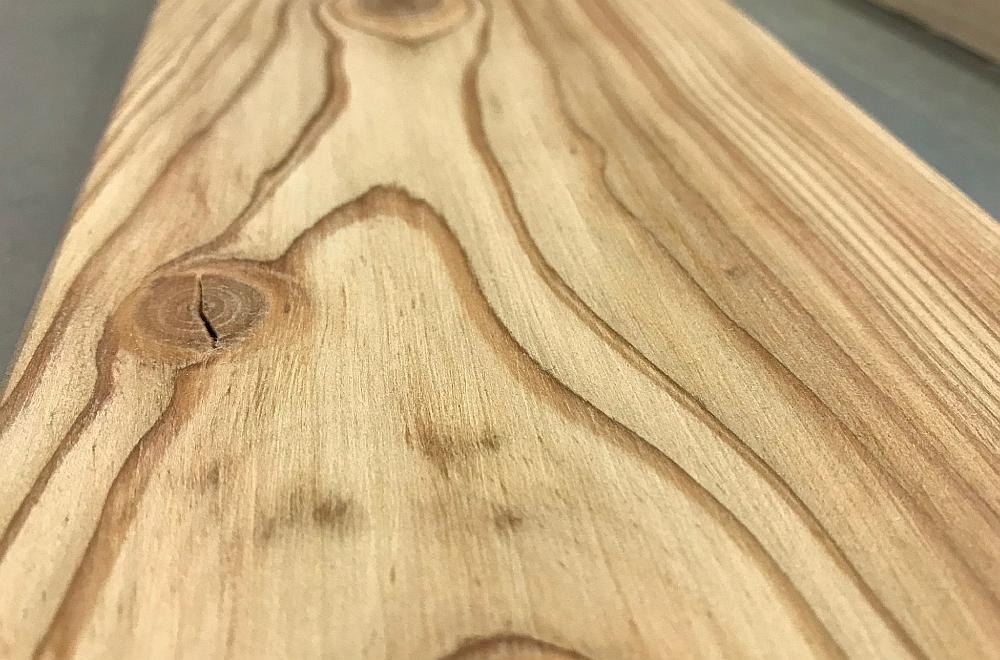
Brushed wood is the talk of the town and is getting more and more attention among customers. Brushing of wooden surfaces is one of the most important processes when working on rustic wooden furniture or just simply decorating.
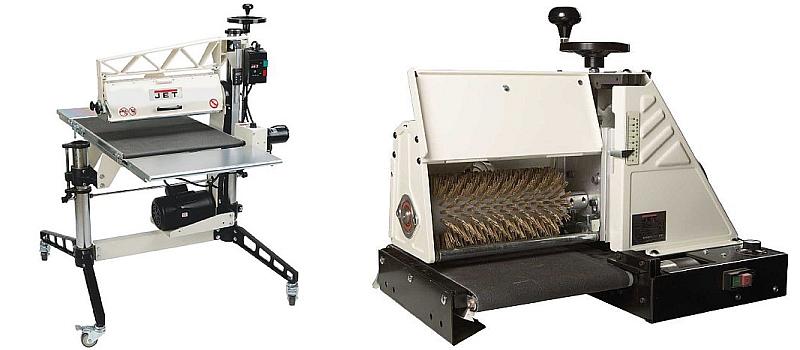
Our company has been looking into brush sanders for the past five years. The first machine we have offered was the JBS22. And as the time went on, we have expanded our range of brush sanders with the smaller JET 10-20 Plus and a slightly larger DDS-225.
Brushing of wood is a special material treatment used to highlight and emphasize the structure of wood and rings, grown grain.
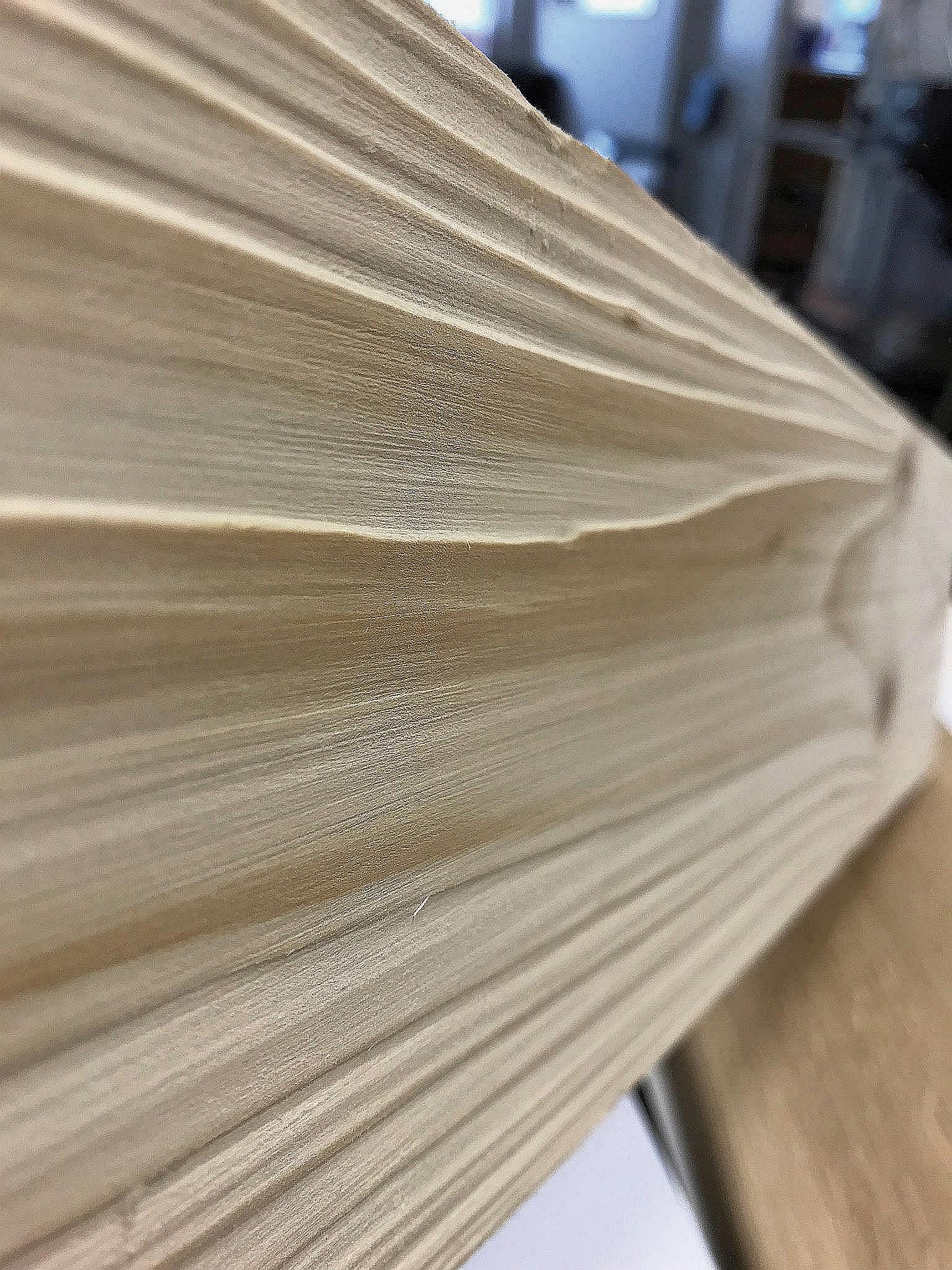 This look is ideal for interior as well as exterior. Brushing lets you achieve that rustic 'old' wood look, indistinguishable from a decades-old piece of wood. Also, brushing adds another useful feature, it actually extends the life of such a material because of the removal of softer grain. The harder grain remains on top whilst the heat and pressure thicken the grain making it stronger and more durable. By brushing you are almost sterilizing the wood and at the same time protecting it against insects and fungi.
This look is ideal for interior as well as exterior. Brushing lets you achieve that rustic 'old' wood look, indistinguishable from a decades-old piece of wood. Also, brushing adds another useful feature, it actually extends the life of such a material because of the removal of softer grain. The harder grain remains on top whilst the heat and pressure thicken the grain making it stronger and more durable. By brushing you are almost sterilizing the wood and at the same time protecting it against insects and fungi.
Thanks to our long-term experience and a wide variety of brush sanders, we are being approached more and more by woodworkers and craftsmen. That is why we will try to answer the majority of frequently asked questions in this article.
To achieve the ideal and perfect brushed effect, it is necessary to follow the proper procedure and stick to some basic principles. We believe that the advice we provide in this article will serve you as an entry point for achieving a perfect surface when brushing and making rustic furniture.
It is very important to keep the different types of grain, structure and cut of various woods in mind. Some woods may be easy to brush and some may not. There is a large variety of various brush drums available to speed-up the process of brushing. The final surface largely depends on the type of a selected brush drum and the number of passes.
What is the difference between manual or mechanical brushing
By manual sanding, we mean a hand-held sander equipped with a brush and without the option of altering the feed speed or an even removal. The main problems of manual brushing are the uneven removal, quick wear of the brush and too much time spent before you actually do any work. Mechanical sanding offers the opposite. Thanks to a steady feed and the option to set up stock removal you are able to achieve fine, even and most importantly fast results.
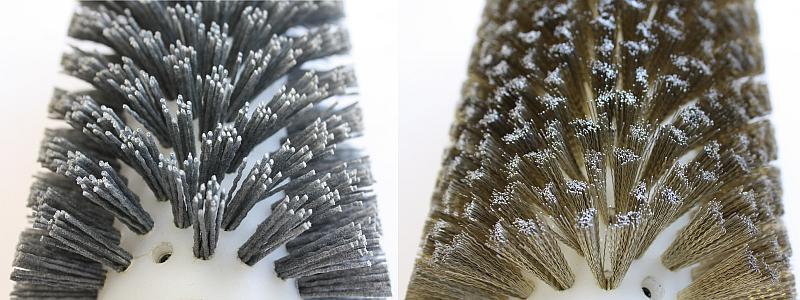
Brush types
Various types of brushes are available for proper work. Every one of them serves a different purpose. The main types are steel cordwire, abrasive nylon (Abralon for short) or nylon without an abrasive. Another important parameter is the wire diameter, either steel or nylon. The steel brushes are ideal for speeding up the process, to quickly disturb the surface and create deep grooves. Some hardwoods are not suitable for abrasive nylon brushes, that material would leave the surface almost untouched. The diameter of a wire leaves a so-called trace on the material. A thin diameter is able to reach deeper while the wider wire is ideal for surface work, that is why different diameters are used combined to achieve ideal results.
Steel Cordwire 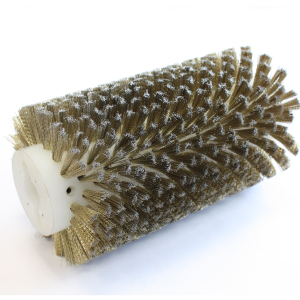
A steel brush is ideal for quick disruption of a surface, especially a hard one. Smaller diameters (approximately 0,28 mm) are also ideal for medium-hard woods. Steel wires of 0,5 mm are especially ideal for hardwoods. The steel wire creates deeper grooves on one pass, those are a great start for further spreading and finishing off the grooves intensifying the brushed-out effect. It's important to remember not to overload the drum by setting up excessive stock removal. An overly deep stock removal may cause the wires to break out and shorten the life of your brush. What makes the steel wire more efficient is its inability to bend regularly.
Abrasive Nylon Brush 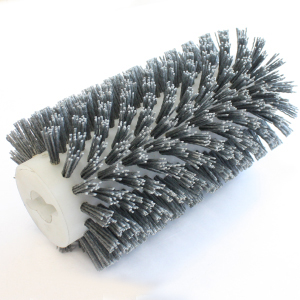
The abrasive nylon brush is equipped with bristles fitted with an abrasive grain of various sizes (G46, G80, G120, D240). The abrasive grain enhances the sanding effect of the brush. It's important to remember that this type of bristle is larger in diameter, up to 1,7 mm (G46). The smaller coarseness of brush means smaller bristles and less effective torn-out of grain. The brush with abrasive G240 has 0,7 mm thick bristles and is ideal for finishing tasks, cleaning off wooden surfaces and sanding of shaped parts with up to 15 mm deep patterns.
Recommended procedure
The brushing process may vary according to the desired result or type of wood, however, it is recommended to stick to a couple of principles. It's necessary to have the final, desired structure in mind before brushing. Am I going for deeper grooves or only surface alterations, what sort of wood am I going to be brushing? You will decide which brush to use according to these questions. The basic procedure for achieving a distinctive structure is the following. First, use a steel brush to create thin but deep grooves. Then continue with an abrasive nylon brush. You will go from thicker and coarser brushes towards finer and thinner ones. That way, the result will be a deep and distinctive structure. If you're aiming at surface brushing, the abrasive nylon brush with a coarse grain (G46) will be enough. The thick bristles will create a fine surface job. Then it's best to use a finer brush to clean up regular grooves, a G80 brush is ideal for that job. It's important to perform several passes to achieve the desired effect. We also recommend rotating the material. One pass pushes the grain in one direction so rotating the material by 180° speeds up the process.
Brushing of wood is a specific process that cannot be described only in a few points. But we still think this article may come in handy in the beginnings. We recommend using the JET 10-20 Plus Brush Sander with plenty of brushes available as accessories, or the JBS22 Brush Sander. For more demanding tasks, we recommend the DDS-225 Dual Drum Sander that brushes more efficiently than sanders with one drum.
Should you have any questions concerning brushing or sanding wood, don't hesitate and call our technical support.
Back to what's new